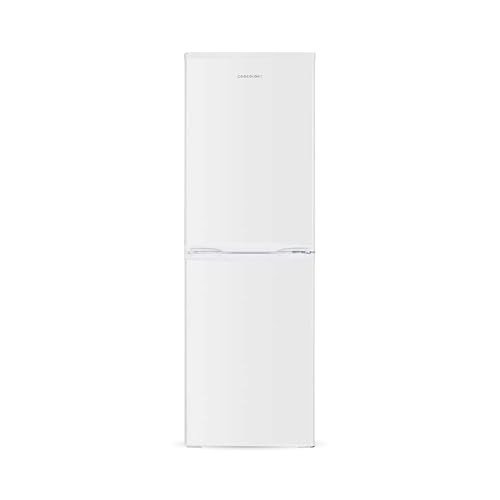best-french-style-fridge-freezer-uk5422
best-french-style-fridge-freezer-uk5422
The Best Fridges And Freezers Tricks To Rewrite Your Life
Understanding Fridges and Freezers: The Essential Kitchen Appliances
Fridges and freezers are two of the most essential home appliances in modern-day cooking areas. These devices serve an essential role in food conservation and waste reduction by ensuring that disposable products stay fresh and safe for usage. This short article looks into the different kinds of fridges and freezers, their functionalities, and crucial factors to consider for selection and upkeep.

Kinds of Refrigerators
The marketplace uses a variety of refrigerator types, each created to satisfy different consumer needs. Below is a list of the most typical types of Best Fridges (Code.Paperxp.Com):
-
Top-Freezer Refrigerators
- Most typical type.
- Freezer compartment lies above the refrigerator area.
- Typically more budget friendly and energy-efficient.
-
Bottom-Freezer Refrigerators
- Freezer lies at the bottom.
- Permits simpler access to fresh items at eye level.
- Often features pull-out drawers for much better organization.
-
Side-by-Side Refrigerators
- Refrigerator and freezer sections are surrounding.
- Suitable for narrow cooking areas and permits easy access to both compartments.
- Often comes with water and ice dispensers.
-
French Door Refrigerators
- Combines a bottom freezer with double doors at the top.
- Offers sufficient storage and elegant designs.
- Often includes features like temperature-controlled drawers.
-
Compact Refrigerators
- Smaller size suitable for minimal spaces.
- Frequently utilized in dorm rooms, studio apartments, or as secondary fridges.
Table 1: Comparison of Refrigerator Types
| Type | Advantages | Disadvantages | Normal Size |
|---|---|---|---|
| Top-Freezer | Inexpensive, energy-efficient | Less hassle-free access to the freezer | 14-30 cu. ft. |
| Bottom-Freezer | Simpler access to fresh food | Freezer can be harder to organize | 19-30 cu. ft. |
| Side-by-Side | Easy access, water/ice dispenser | Narrow vs. storage area | 22-30 cu. ft. |
| French Door | Stylish, spacious, organized | More pricey | 20-30+ cu. ft. |
| Compact | Space-saving, portable | Limited storage | 1.7-5.5 cu. ft. |
Types of Freezers
Freezers are a similarly essential home appliance for food preservation. They can be found in various designs created to fit different family requirements. Consider the following types:
-
Upright Freezers
- Operate like a basic refrigerator with vertical storage.
- Simpler to arrange with racks and compartments.
-
Chest Freezers
- Big, horizontal design typically offering more storage space.
- Maintains temperature levels much better during power outages.
- More energy-efficient than upright designs.
-
Portable Freezers
- Compact units ideal for outside activities or small spaces.
- Typically utilized for camping trips or as short-term storage.
Table 2: Comparison of Freezer Types
| Type | Advantages | Disadvantages | Normal Size |
|---|---|---|---|
| Upright Freezer | Simpler to organize | Less energy-efficient, more floor space | 5-20 cu. ft. |
| Chest Freezer | Holds more products, energy-efficient | Harder to arrange | 5-25 cu. ft. |
| Portable Freezer | Compact and flexible | Minimal storage capacity | 1-10 cu. ft. |
Key Features to Consider
When selecting a fridge or freezer, consumers ought to bear in mind several features that can improve functionality:
- Energy Efficiency: Look for models with the ENERGY STAR certification to save money on electrical energy expenses.
- Storage Capacity: Evaluate storage needs based upon household size and consuming routines.
- Temperature Control: Some devices provide digital controls for exact temperature settings.
- Adjustable Shelving: Customizable shelving enables optimal company.
- Water and Ice Dispenser: Offers benefit however can take up important space inside.
- Noise Level: Sound scores can influence convenience, particularly in open-concept homes.
Pros and Cons of Having a Fridge and Freezer
While fridges and freezers are indispensable technologies, they likewise have particular benefits and disadvantages:
| Pros | Cons |
|---|---|
| Protect food lifespan and reduce waste | Need routine upkeep |
| Permit bulk buying and meal prepping | Can be pricey to acquire and run |
| Offer convenience and quick access to food | Inhabit substantial kitchen area area |
Maintenance Tips
To ensure durability and optimal performance of fridges and freezers, consider the following maintenance ideas:
- Regular Cleaning: Clean the interior and exterior regularly to prevent buildup of dirt and germs.
- Check Seals: Inspect door seals routinely for leaks to keep performance.
- Temperature level Settings: Keep the fridge at 34-38 ° F and the freezer at 0 ° F for ideal food conservation.
- Defrost as Needed: Chest freezers must be thawed routinely to preserve performance.
- Clear Air Vents: Ensure that air flow isn’t obstructed to enhance energy performance.
FAQs About Fridges and Freezers
Q1: How long can food be kept in a freezer?A: Most foods can be kept in a freezer for numerous months. Meats and poultry typically last 4-12 months, while veggies can last as much as 8-12 months.
Q2: How typically should I clean my fridge and freezer?A: It is recommended to clean your fridge and freezer every 3 to 6 months, or as needed when spills take place. Q3: Can I put hot food directly in the fridge?A: It is suggested to cool hot food to room temperature level before placing it in the fridge to avoid
raising the temperature level inside the appliance. Q4: Why is my fridge running constantly?A: This might be due to a malfunctioning thermostat, blocked coils, or door seals that aren’t working appropriately. Fridges and freezers are indispensable
assets to contemporary households, offering vital services for food storage and conservation.
Understanding the numerous types, features, and maintenance requirements can help consumers select the ideal appliances for their needs and maximize their performance. Welcoming energy-efficient models not just supports sustainable practices but likewise adds to considerable savings on utility expenses, making informed choices more vital than ever.



